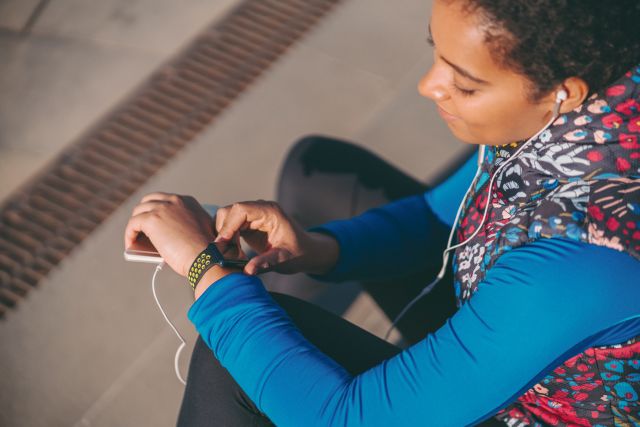Updated on April 14, 2022.
Whether you’re walking to get fit, burn calories, or relieve the stress of the workday, a tracker is a great tool to motivate you to take more steps. These days, there’s a thriving market of fancy wristwatch trackers that log your steps, calories burned, heart rate, and more.
But sometimes a simple pedometer is all you need to get the job done. In a 2017 study published in Psychology & Health, physically inactive young adults who used a pedometer increased their motivation to walk and their daily step count.
And getting into the habit of tracking your steps in this way may pay dividends years down the road. A 2018 study in PLOS Medicine found that people in the UK who used pedometers were more physically active 3 to 4 years later than those who didn’t. Research shows that using pedometers may also help people manage pain, get better sleep, and improve mental well-being.
With so many trackers to choose from, which is the best option for you?
If you’re looking for a tool to simply count your steps, you can probably skip more expensive gadgets and go for a basic pedometer. You can find good and affordable pedometers between $15 and $35. In fact, one small study published in 2017 in the International Journal of Exercise Science found that one of the cheapest pedometer brands was actually more accurate in counting daily steps than higher-end models.
Use this checklist to help you find what you need:
Check the accuracy. You’ll want to make sure that you’re choosing a pedometer that doesn’t add steps when you shake it. There are a few types of mechanisms that count steps, but accelerometers—which measure the change in motion of an object—are considered accurate in gauging different speeds when walking. They can also help detect movement when you’re sitting or standing. This type of tracker is typically attached to the waist or clipped on a belt. Look for models that need to be calibrated to your stride length. (Don’t worry, it's easy to do.)
Check how it attaches. The last thing you want is to backtrack your walk to look for a pedometer that you lost two miles ago. Look for a sturdy clip-on model, ideally with a tiny "leash" as a backup. Some styles clip onto a waistband, belt, clothing, or bra strap. Others strap on like wristwatches. A few even count steps when carried in a backpack or briefcase.
Check the display. Look for big, clear numbers that are easy to read. Some displays light up, which is helpful if you tend to walk early or late or use reading glasses.
Check the tech. Only buy features you need. If walking around the neighborhood is your game, you may just need a daily step counter with a 7-day memory to get a weekly total and to compare daily distances. Additional features may just make the device too complicated to use.
If you are more vigorous walker or runner or are training for a race—and are willing to splurge—there is some benefit to investing in a state-of-the-art tracker.
Some fitness trackers, for example, can give you an overall sense of your health by counting the number of calories burned with each step, tracking your heart rate, estimating your speed, and even logging your sleep times. If you like listening to music on your walks, some smartwatches allow you to store a library of songs or sync to a streaming music service and let you pair the device with Bluetooth headphones.
In some cases, you can also let your smartphone do the counting for you and access the results on an app that has a steps tracker, like Sharecare (available for Android and iOS).
One additional benefit to fancier gadgets is the is the ability to share your workout data with friends and to create healthy competitions (think: who can cover the most ground in a day?). When you work out with your friend, you’re more likely to stay motivated and consistent in showing up for walks.







